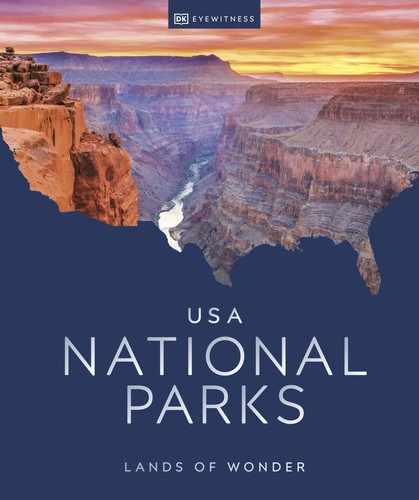INSPIRING A GENERATION
The creation of the National Park Service sparked a tourism boom that has yet to subside. Landscape photography drew the public’s interest and, as more parks were added, a road trip to a national park became the default summer vacation.
Clever campaigning
Before a National Parks Service could exist, Americans had to believe in it as an idea. With this in mind, parks advocate Stephen Mather teamed up with photographer Robert Sterling Yard in 1915. The two embarked on a publicity campaign designed to persuade the American public that these wild places were theirs to discover and care for. Yard collected stunning photographs of the first established national parks, taken by some of the country’s best photographers. With these he created promotional pamphlets and sent them to every member of Congress, plus 275,000 Americans. The NPS was born the following year.

Mary Colter designed this house in the Grand Canyon
Visionary photography
Perhaps the most influential early park photographers were the Kolb brothers. In 1904, Emery and Ellsworth Kolb established a photo studio at the Grand Canyon—though in reality this was a makeshift tent on the rim above the Bright Angel Trail. By 1906 the tent studio had become a small wooden house, and the brothers were running a healthy business taking and selling photos of park visitors. As adventurous as they were marketing-savvy, the Kolbs would take snapshots of tourists at the canyon’s rim, then race down the steep trail to process the images in the river water below, before rushing them back up to the studio ready to sell before the visitors left the park.
The Kolb brothers explored the canyon far and wide, capturing landscapes the likes of which most Americans had never seen. They even made an early motion picture while running the Colorado River, which they presented on lecture tours around the US; that adventure was described in a special issue of National Geographic, cementing the Kolbs’ reputation and helping spread the word about the incredible natural beauty of the Grand Canyon. Today visitors can take a look inside the ramshackle Kolb Studio, which stands safely in its original location, preserved by the Historic Sites Act, in spite of some officials having campaigned to tear down the studio.
Ansel Adams meanwhile took some of his most famous photographs at Yosemite in the 1920s and 1930s. He first visited the park at the age of 14 and—much like John Muir and Yosemite—it left an indelible impression. He returned with his camera as soon as he was able. In the wilderness Adams found beauty and spirituality, which he aimed to share through his photography. Adams was more successful than he could ever have predicted. His masterly photographs introduced a generation to the splendor of the western landscape, and mass tourism followed.
Harmonious architecture
Photographers aren’t the only ones who shaped the way we see our national parks. Architect Mary Colter is largely responsible for the distinctive look of the structures in most parks today: how they blend in with the environment, use local and therefore sustainable materials, and look charmingly hand-built. The best examples of Colter’s work include several buildings from 1905 through 1932, and cling to the South Rim of the Grand Canyon. These demonstrate how Colter took inspiration from the surrounding landscapes, as well as from American Indian design; her Desert View Watchtower echoes the silhouette of an Anasazi tower, for example, while the Hopi House resembles a traditional dwelling, with its tiny windows and red sandstone walls. The particular style she developed spread to other parks and became known as “National Park Service rustic”—or “parkitecture.”
“ A great photograph is one that fully expresses what one feels, in the deepest sense, about what is being photographed. ”
Ansel Adams, 1982
INSPIRING IDEAS
Snap the Parks
Try recreating the iconic works of these photographers:
Edward Weston
Echo the sculptural lines snaking across the dunes at White Sands.
Stephen Wilkes
If you’re patient, try Wilkes’ 2015 day-to-night time-lapse of the Grand Canyon.
Ansel Adams
Adams captured the same frame from Yosemite’s Inspiration Point in summer and winter. Can you?

Emery and Elsworth Kolb did anything to capture that perfect photograph, even being suspended in a crevasse over the Grand Canyon as here, in 1908

The Kolb brothers loved Grand Canyon’s landscape, here showing a man and his donkey on Tanner Ledge, c. 1913
